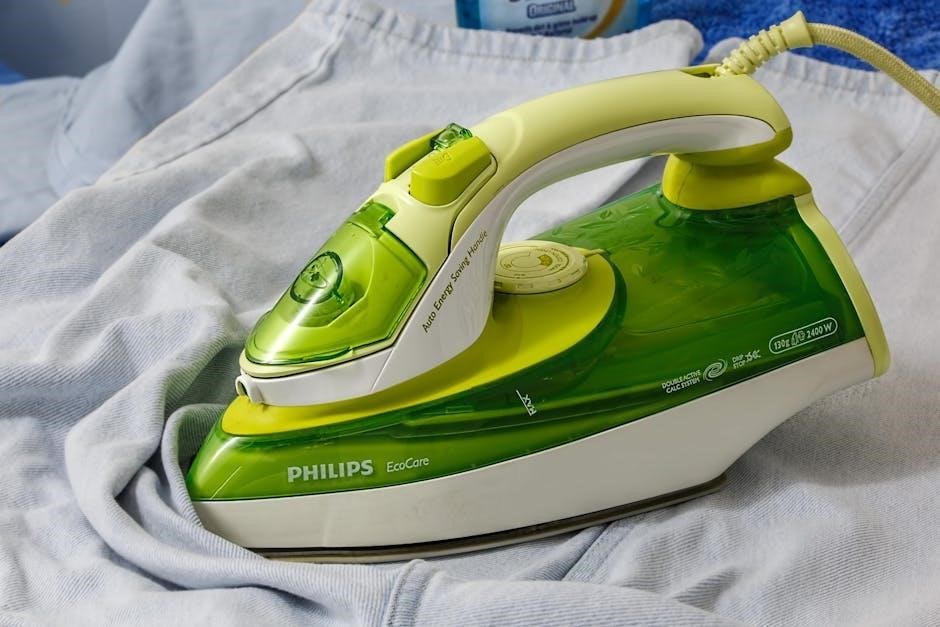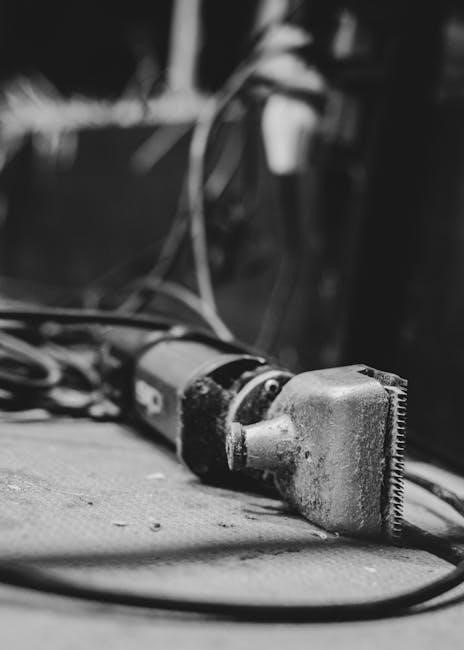Breast pumps are essential devices for expressing milk, offering convenience for nursing mothers. They come in manual and electric types, each with unique benefits to be explored in this guide.
1.1 What Are Breast Pumps?
Breast pumps are devices designed to express milk from the breasts, offering a practical solution for nursing mothers. They are available in two primary types: manual and electric. Manual breast pumps are handheld devices that use suction to extract milk, operated by squeezing a handle. Electric breast pumps, on the other hand, are automated, using motorized suction to express milk more quickly and with less effort. Both types are designed to relieve engorgement, store milk for later use, or support breastfeeding. Understanding their differences is key to selecting the right option for individual needs.
1.2 Importance of Breast Pumps for Nursing Mothers
Breast pumps play a vital role in supporting nursing mothers by providing flexibility and convenience. They allow mothers to express milk when unable to breastfeed directly, ensuring a steady milk supply and relieving engorgement. For working mothers or those with busy schedules, breast pumps enable continued breastfeeding by storing milk for later use. They also assist mothers with latching difficulties or separated from their babies. Overall, breast pumps are essential tools that support lactation, offering practical solutions for modern parenting challenges while promoting the health and well-being of both mother and baby.

Manual Breast Pumps
Manual breast pumps are portable, cost-effective, and suitable for occasional use. They are easy to clean and ideal for mothers who value simplicity and affordability.
2.1 What Is a Manual Breast Pump?
A manual breast pump is a hand-operated device designed to express breast milk. It typically consists of a breast shield, a collection bottle, and a handle for manual suction. These pumps are portable, cost-effective, and easy to use, making them ideal for occasional use or when an electric pump isn’t practical. They allow mothers to maintain control over the suction pressure and are often preferred for their simplicity and affordability. Manual pumps are also lightweight, easy to clean, and suitable for travel, offering a practical solution for nursing mothers.
2.2 How Manual Breast Pumps Work
A manual breast pump operates through a simple, hand-powered mechanism. The user squeezes a handle, creating suction that draws milk from the breast into a connected collection bottle. The breast shield fits over the nipple, and the handle’s movement mimics the natural sucking rhythm of a baby. This process allows mothers to control the suction strength and rhythm, providing a customizable experience. The manual effort required makes these pumps quieter and more portable compared to electric models, though they may require more time and effort for expression.
2.3 Advantages of Manual Breast Pumps
Manual breast pumps are highly portable, lightweight, and easy to carry, making them ideal for on-the-go use. They are generally quieter than electric pumps, offering discretion in public settings. These pumps are cost-effective and require no batteries or electricity, ensuring reliability in any situation. Manual pumps are also easy to clean and maintain, with fewer parts compared to electric models. They provide a natural, controlled suction experience, allowing mothers to mimic their baby’s feeding rhythm. This makes them a great option for occasional use or as a backup to an electric pump.
2.4 Disadvantages of Manual Breast Pumps
Manual breast pumps can be time-consuming and labor-intensive, requiring physical effort and hand strength. They may not be as efficient for mothers who need to express large volumes of milk frequently. The repetitive pumping motion can become tiring, especially for those with busy schedules. Additionally, manual pumps may not offer the same level of suction strength as electric models, potentially limiting milk expression. They are less practical for double pumping, making them less suitable for mothers who need to express milk quickly or in large quantities.
2.5 Best Uses for Manual Breast Pumps
Manual breast pumps are ideal for occasional use, offering a portable and discreet option for expressing milk. They are perfect for mothers who need to pump infrequently or in situations where an electric pump is impractical, such as during travel or in quiet settings. Manual pumps are also great for expressing small amounts of milk, like relieving engorgement or supplementing breastfeeding. Their compact design makes them easy to carry in a bag, providing a convenient backup solution. They are a practical choice for mothers who value simplicity and don’t require frequent or high-volume pumping.
Electric Breast Pumps
Electric breast pumps are powerful tools designed for frequent and efficient milk expression. They offer adjustable settings for suction and speed, making them ideal for busy mothers who need to pump regularly, especially those returning to work or with demanding schedules.
3.1 What Is an Electric Breast Pump?
An electric breast pump is an automatic device designed to express milk efficiently. It uses motorized suction to simulate a baby’s nursing pattern, offering adjustable settings for comfort. These pumps are ideal for frequent use, providing faster and less physically demanding sessions compared to manual options. Electric pumps are often preferred by working mothers or those with busy lifestyles, as they save time and effort. Many models are portable and come with features like multiple suction levels, making them versatile for various needs. They are a popular choice for their convenience and efficiency in regular use.
3.2 How Electric Breast Pumps Work
Electric breast pumps use a motorized mechanism to create suction, mimicking a baby’s natural feeding rhythm. The pump consists of a motor, controls, and breast shields. When turned on, the motor generates suction, which is applied through the breast shields to express milk. Many models allow customization of suction strength and speed, enabling a comfortable experience. The expressed milk is collected in attached bottles or bags. These pumps are designed for efficiency, making them ideal for frequent or long-term use, especially for mothers with busy schedules or those who need to pump regularly while away from their babies.
3.3 Advantages of Electric Breast Pumps
Electric breast pumps offer superior efficiency and convenience, making them ideal for frequent use. They require minimal manual effort, allowing mothers to pump quickly and comfortably; Adjustable suction and speed settings enable customization for optimal comfort. These pumps are also faster than manual options, saving valuable time. Their portability and ability to express milk from both breasts simultaneously make them perfect for busy lifestyles. Additionally, electric pumps are often recommended for mothers who need to pump regularly, especially those returning to work or managing multiple responsibilities while breastfeeding.
3.4 Disadvantages of Electric Breast Pumps
Electric breast pumps can be more expensive and heavier, reducing portability. They often require electricity or batteries, limiting use in certain settings. Noise levels may be higher, potentially causing discomfort in quiet environments. Dependence on power sources can be inconvenient while traveling. Additionally, some users find the size and weight less convenient for frequent transport. Maintenance and cleaning can also be more complex compared to manual pumps. Despite their efficiency, these drawbacks make electric pumps less ideal for occasional or on-the-go use compared to manual alternatives.
3.5 Best Uses for Electric Breast Pumps
Electric breast pumps are ideal for frequent or daily use, making them perfect for working mothers or those with busy schedules. They are highly efficient for double pumping, saving time and expressing more milk quickly. These pumps are also great for long-term use, as they reduce manual effort and fatigue; Portable electric models are excellent for on-the-go pumping, while adjustable settings allow customization for comfort and efficiency. They are particularly beneficial for mothers who need to express milk regularly and value speed and convenience in their pumping routine.

Manual vs. Electric Breast Pumps: Key Differences
Manual breast pumps are portable and cost-effective but require manual effort, while electric pumps are faster and more efficient for frequent use, though often bulkier and noisier.
4.1 Portability and Convenience
Portability and convenience are key factors when choosing between manual and electric breast pumps. Manual pumps are lightweight, compact, and battery-free, making them ideal for on-the-go use. They are perfect for occasional pumping or as a backup option. Electric pumps, while often bulkier, offer convenience through faster and hands-free pumping, especially with portable models. Some electric pumps are wearable, allowing discreet use. Manual pumps require physical effort but are easier to carry, while electric pumps save time and effort, making them better for frequent or daily use. Each type caters to different lifestyles and needs.
4.2 Pumping Speed and Efficiency
Electric breast pumps are generally faster and more efficient than manual ones, especially for frequent or double pumping. They automate the suction process, reducing the time and effort required. Manual pumps, while effective, demand consistent hand operation, which can be tiring and slower. Electric pumps often feature adjustable settings, allowing for personalized suction strength and cycle speeds, which enhances milk expression efficiency. For mothers needing to express milk quickly, electric pumps are more practical, while manual pumps are better suited for occasional or small-volume use due to their slower and more labor-intensive nature.
4.3 Cost Comparison
Manual breast pumps are typically more affordable and cost-effective, making them a budget-friendly option for occasional use. Electric breast pumps, while more expensive upfront, often offer long-term savings through their efficiency and durability. High-end electric models with advanced features can be significantly pricier, but they are ideal for frequent or long-term use. Wearable pumps fall in the middle, balancing cost and convenience. Ultimately, the choice depends on personal budget and pumping frequency, with manual pumps being a cost-effective solution for less frequent needs and electric pumps justifying their higher cost through superior performance and time-saving capabilities.
4.4 Noise Levels
Manual breast pumps are generally quieter and more discreet, making them ideal for use in public or shared spaces. Electric breast pumps, especially older models, can be noisier due to their motor operation. However, many modern electric pumps are designed with noise reduction features, offering quieter sessions. Portable electric pumps often strike a balance between efficiency and noise levels, while wearable pumps are particularly quiet. For those prioritizing discretion, manual pumps are a better choice, whereas electric pumps may be more convenient despite slight noise, depending on the model and design advancements.

Specialized Breast Pumps
Specialized breast pumps include wearable and hospital-grade options, offering advanced features like portability, discreet use, and powerful suction for medical or frequent pumping needs.
5.1 Wearable Breast Pumps
5.2 Hospital-Grade Breast Pumps
Hospital-grade breast pumps are high-performance devices designed for heavy-duty use, often in medical settings or for mothers with significant lactation challenges. These pumps are typically more powerful and durable than personal-use pumps, offering precise suction control and efficient milk expression. They are ideal for establishing milk supply, especially for mothers of premature babies or those facing breastfeeding difficulties. While they can be bulkier and noisier, their strength and reliability make them a valuable option for long-term or intensive pumping needs, though they are often rented rather than purchased for personal use.
How to Choose the Right Breast Pump
Selecting the right breast pump involves considering frequency of use, lifestyle, and budget. Choose a pump that balances comfort, efficiency, and portability for your unique needs.
6.1 Frequency of Use
The frequency of use is a critical factor in choosing between manual and electric breast pumps. For occasional use, manual pumps are convenient and cost-effective. However, for frequent or daily pumping, electric pumps are more efficient and save time. Consider your lifestyle: if you work outside the home or need to pump multiple times a day, an electric pump is ideal. Manual pumps are better suited for sporadic use or as a backup option. Assessing how often you plan to pump will help narrow down the best choice for your needs.
6.2 Lifestyle and Portability Needs
When choosing between manual and electric breast pumps, consider your lifestyle and portability needs. Manual pumps are lightweight, quiet, and portable, making them ideal for occasional, on-the-go use or as a backup option. Electric pumps, especially wearable models, offer hands-free pumping and are better suited for busy schedules or frequent use. If you travel often or work outside the home, a portable electric pump with a rechargeable battery may be more convenient. Lifestyle factors, such as the need for discretion or ease of use, will influence which type aligns best with your daily routine and preferences.
6.3 Budget Considerations
Budget plays a crucial role in selecting a breast pump. Manual pumps are generally more affordable, priced between $30 to $50, making them a cost-effective option for occasional use. Electric pumps, however, are more expensive, ranging from $100 to $300 for high-end models. Some electric pumps may be covered by insurance, reducing out-of-pocket costs. Additionally, rental options are available for hospital-grade pumps, which can be a budget-friendly choice for short-term needs. Considering your budget and how often you plan to use the pump will help determine the most economical option for your lifestyle and breastfeeding goals.
6.4 Personal Comfort and Fit
Personal comfort and fit are vital when choosing a breast pump. Electric pumps often feature adjustable suction levels and massage settings, allowing for a more tailored experience. Manual pumps may appeal to those who prefer a softer, more natural expression method. Proper fit of the breast shields is essential for comfort and efficiency, as ill-fitting shields can cause discomfort or reduce milk flow. Both types of pumps come in various sizes and designs, so it’s important to try different options to ensure the best fit and comfort for your body.

Maintenance and Care of Breast Pumps
Regular cleaning and sanitizing of breast pumps are crucial to ensure hygiene and longevity. Proper drying after washing helps prevent mold and bacterial growth. Always store components in a clean, dry place to maintain functionality and safety.
7.1 Cleaning and Sanitizing
Cleaning and sanitizing breast pumps are essential to prevent contamination and maintain hygiene. For both manual and electric pumps, wash all parts with mild soap and warm water after each use. Rinse thoroughly to remove any residue. Sanitizing can be done by boiling parts in water for 5-10 minutes or using a dishwasher’s sanitize cycle. Allow components to air dry to prevent mold growth. Regular maintenance ensures the pump remains safe and effective for expressing milk. Proper care also extends the lifespan of the device, keeping it in optimal working condition for consistent use.
7.2 Storage Tips
Proper storage of breast pumps is crucial to maintain hygiene and functionality. After cleaning and sanitizing, store parts in a clean, dry place, away from direct sunlight and humidity. For manual pumps, keep components in a storage bag to prevent dust accumulation. Electric pumps should be stored in their original case or a protective cover to avoid damage. Ensure all pieces are completely dry before storing to prevent mold growth. Regularly inspect stored parts for signs of wear or deterioration. Proper storage helps maintain the pump’s efficiency and ensures it remains ready for use when needed.

Safety Considerations
Always follow manufacturer guidelines for proper usage to ensure safety. Avoid using damaged or ill-fitting parts, as this can cause discomfort or complications. Regular inspection and maintenance are essential to prevent issues.
8.1 Proper Usage Guidelines
Proper usage of breast pumps is crucial for safety and effectiveness. Always follow the manufacturer’s instructions for assembly, operation, and maintenance. Ensure the pump fits correctly to avoid discomfort or injury. For electric pumps, use the appropriate settings and avoid prolonged use without breaks. Manual pumps require consistent, gentle suction to prevent tissue damage. Regularly inspect for wear and tear, and clean all parts thoroughly after each use to maintain hygiene. Proper usage guidelines help maximize comfort and milk expression while minimizing risks.
8.2 Avoiding Common Mistakes
Common mistakes when using breast pumps include improper fit, incorrect settings, and inconsistent cleaning. Ensure the flange size matches your nipple to avoid discomfort and ineffective pumping. Over-suctioning with manual pumps can cause tissue damage, while electric pumps on high settings may lead to nipple soreness. Failure to sanitize parts regularly can result in bacterial growth. Ignoring manufacturer guidelines may reduce pump efficiency and safety. Being aware of these mistakes helps ensure a safe, comfortable, and effective pumping experience for nursing mothers.
Choosing between manual and electric breast pumps depends on personal needs, lifestyle, and frequency of use. Both options offer unique benefits, ensuring mothers can express milk effectively and conveniently.
9.1 Final Thoughts on Manual vs. Electric Breast Pumps
Manual and electric breast pumps cater to different needs, with manual pumps offering portability and affordability for occasional use, while electric pumps provide efficiency and speed for frequent pumping. Lifestyle, budget, and personal comfort are key factors in choosing the right option. Mothers who value convenience and time-saving may prefer electric pumps, whereas those seeking a cost-effective, discreet solution may opt for manual ones. Both types ensure effective milk expression, making them essential tools for nursing mothers to meet their unique circumstances and preferences.

References
For further reading, explore resources like Consumer Reports, Lansinoh guides, and reputable breastfeeding websites, offering insights and product reviews on manual and electric breast pumps.
10.1 Recommended Resources for Further Reading
For in-depth information, visit Consumer Reports for unbiased reviews and guides on breast pumps. Explore Lansinoh and other reputable breastfeeding websites for detailed product comparisons. Additionally, search engines like Google offer a wealth of articles and forums discussing manual vs. electric breast pumps, including real user experiences. Check out specific product pages, such as the Lansinoh 2-in-1 Double Electric Breast Pump, for features and customer feedback. These resources provide valuable insights to help you make an informed decision tailored to your needs.